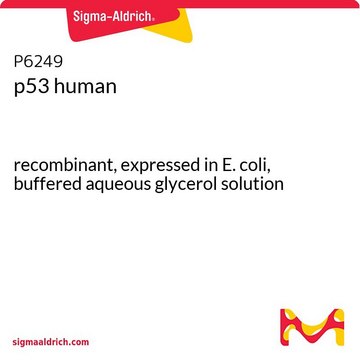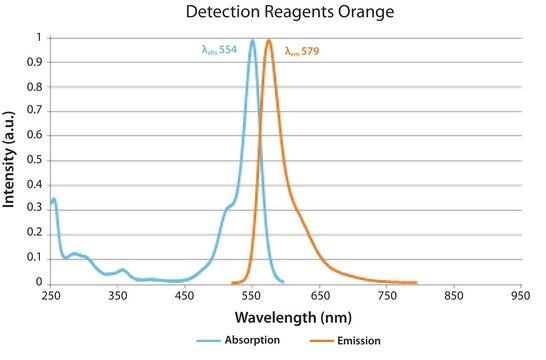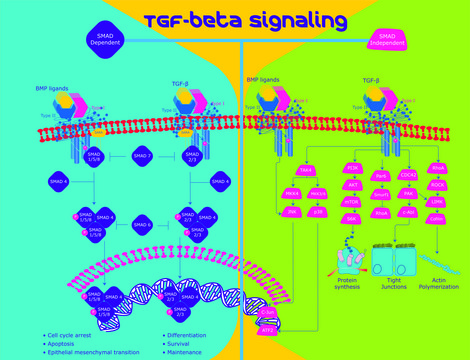추천 제품
생물학적 소스
human
Quality Level
재조합
expressed in baculovirus infected Sf21 cells
분석
≥90% (SDS-PAGE)
양식
aqueous solution
기술
dot blot: suitable
UniProt 수납 번호
응용 분야
genomic analysis
배송 상태
dry ice
저장 온도
−70°C
유전자 정보
human ... TP53(7157)
유사한 제품을 찾으십니까? 방문 제품 비교 안내
일반 설명
p53 protein is composed of an N-terminal domain with a transactivation domain and proline-rich region, a central core-DNA binding domain, and a C-terminal domain with tetramerization and regulatory domains. The TP53 gene which encodes for the p53 protein is mapped on the human chromosome at 17p13.1.
애플리케이션
Useful for the study of postranslational modification of p53, or protein-protein interaction studies.
p53 human has been used in dot blot.
생화학적/생리학적 작용
In addition, p53 was recently shown to induce differentiation of human embryonic stem cells. The effect is dependent on the DNA binding activity of p53.
p53 gene is highly conserved and expressed in normal tissues. It is the most commonly mutated gene in human cancer and more then 500 gene mutations have been described in various types of malignancies, hematologic as well as solid tumors. Intact p53 function is essential for the maintenance of the non-tumorogenic phenotype of cells. Thus, p53 plays a vital role in suppressing the development of cancer.
p53 protein acts as a transcription factor that participates in regulating positively or negatively the expression of several responsive genes. It plays a role in regulating angiogenesis, cellular senescence, autophagy, cell survival, differentiation, and oxidative stress. Mutations in the TP53 gene lead to Li Fraumeni cancer syndrome.
물리적 특성
Histidine-tagged, full length human p53
물리적 형태
Supplied as a solution in 20 mM Tris-HCl, pH 8.0, 20% glycerol, 100 mM KCl, 0.2 mM EDTA, and 1 mM DTT.
Storage Class Code
10 - Combustible liquids
WGK
WGK 3
Flash Point (°F)
Not applicable
Flash Point (°C)
Not applicable
자사의 과학자팀은 생명 과학, 재료 과학, 화학 합성, 크로마토그래피, 분석 및 기타 많은 영역을 포함한 모든 과학 분야에 경험이 있습니다..
고객지원팀으로 연락바랍니다.








